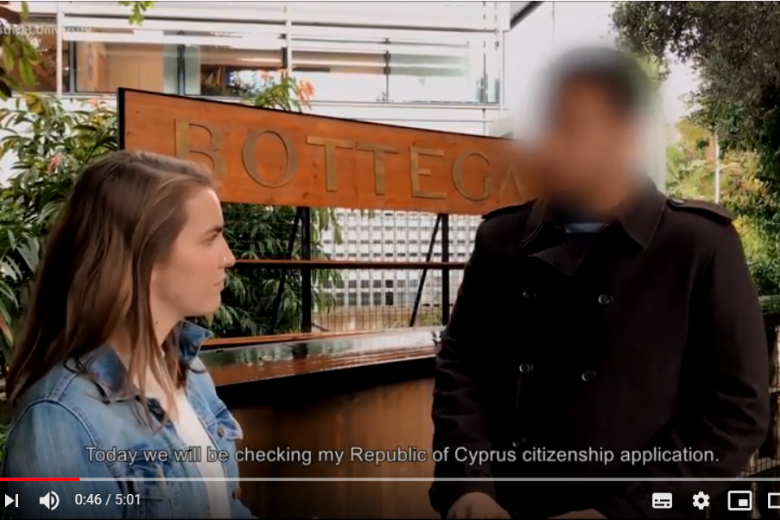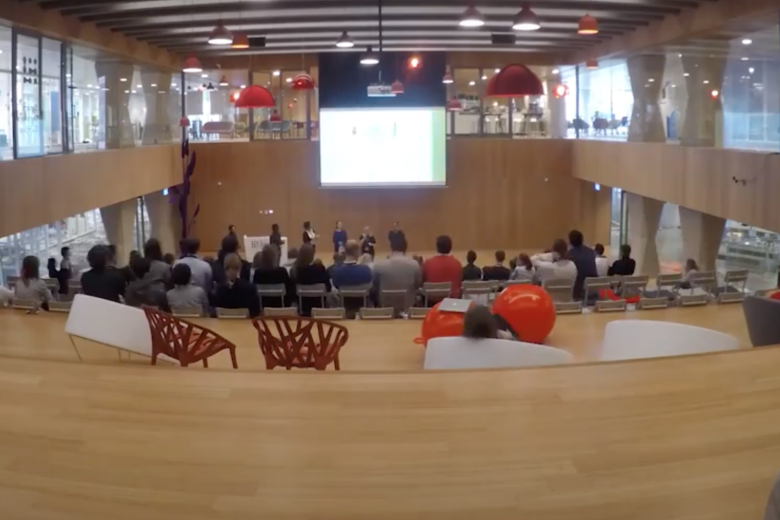Guide 2: how to use videos to promote your research
Videos are a great way to show your enthusiasm for your topic and to engage with your audience in a more personal way. You can directly explain and illustrate concepts from your research and incorporate interviews or news clips to demonstrate the social impact of your research.
Overview: why should you create a video?
Creating a video has many benefits:
1. viewers don’t have to guess your tone like they do with text; your enthusiasm for the topic is immediately apparent
2. you can reach a wider audience, as some internet users are more likely to watch a video than read a lengthy text
3. you can incorporate visuals like computer-generated graphics or animations to help illustrate your research
4. you can add short interviews and clips from news or documentaries to your videos to demonstrate the social impact of your research
5. you can easily record a high-quality video with a smartphone or laptop.
Highlighting the social impact of your research
- Are you researching the legal barriers faced by cross-border workers?
You can record one or two cross-border workers explaining to your audience how these problems affect them personally. That can help the audience to connect with the issue in an emotional way.
- Researching the rights of victims of war crimes?
You can incorporate video clips or images from the press in the video so the audience can see how people have been affected by the war.
- Researching a new law that affects university students?
Get some students to collaborate with you on the video and ask them for their ideas about how to best explain how this law and your research impacts them personally. The possibilities are endless.

Videos open up creative ways to show your audience that your research impacts (or has the potential to impact) real people in real ways.
Some examples of our law research and event videos
Dilek Kurban online book launch and discussion

EU Green Deal and the future of the modern corporation

The right to a republic of Cyprus nationality for Turkish Cypriots

Rethinking Justice Hackathon

Naina Khanna PhD research introduction

Case Law network analysis by Gijs van Dijck

Robert Horselenberg by the Universiteit van Nederland

Maastricht Graduate School

Law and Tech lab

How to plan and create a video step by step:
1. Identify your primary communication goal(s)
It is important to identify what you want to communicate and why before you start creating your video. You may have multiple communication goals, so write them down in order and make sure that your video supports your goals. Some possible goals are:
- to create an engaging abstract of your research to publish with your article
- to illustrate an interesting aspect of your research for a wide audience
- to review a book or article
- to demonstrate the social impact of your research
- to comment on a court ruling
- to tie your research to an issue that is currently in the media
- to persuade policymakers or voters to take a particular action
- to elaborate on concepts that you write about in a blog post or article
- to generate interest in a book or article you have published

By following these simple steps, you can plan and create a video that meets your communication goals and effectively boosts the impact of your research.
2. Identify your primary target group(s)
Who do you most want to reach with your message?
- the general public
- academics in or outside your field
- students
- policymakers/politicians
- lawyers
- prosecutors
- judges
3. Define your message
Defining your message simply means deciding what you want to say to your target group to meet your communication goals. This can be a simple outline of the most important information, or talking points, that you want to include in your video.
Keep your target group in mind and what they will likely find to be the most interesting and relevant aspects of your research. And try to get feedback on this. If your target group is students, for instance, ask a couple of students what they think about your talking points and if there is anything else they think you should include.

4. Decide where you want to publish and promote the video
Consider the channels that are most used by your target group and list all of the channels that you want to use to promote your video. The channels you use could impact the format and length of your video, for instance.
These channels could include:
- UM website (homepage)
- Landing pages like Law research, Faculty of Law or your institute page)
- Law Blogs Maastricht
- YouTube
Twitter science channels like:
5. Select a storytelling format
Choose the best format for how to tell your story, keeping in mind your primary communication goals, target group, visual materials, budget and time.
There are many options for formats, some of which are:
- Question-and-answer format: You can answer questions from an interviewer who is on-camera or off-camera. The questions from the interviewer can be included in the final video or edited out. Another option is to have the questions written on the screen before you give your answer.
- Scripted or unscripted speech: This is just you describing your research while talking into the camera. You can write a full script and memorise it or just write an outline and memorise a few talking points.
- Inspirational presentation: You can create informational slides that you use to guide your audience through an informative and inspirational speech. Popular examples of this are TED Talks and Pecha Kucha presentations.
- Narrated or movie trailer format: If you have a major breakthrough in your research, a story that relates to current debates in the media or politics, or a story that impacts society in a big way, you can approach the university’s press office or video team to see if there is time and budget available to help you make a video with higher production values that is narrated or in the style of a movie trailer.
- Mini educational lecture: You can give an instructional lecture with a structure similar to a Zoom lecture with visual aids on a split screen or to a traditional lecture in front of a classroom.
6. Decide on a budget
You don’t need a big budget (or any budget) to make a video these days. But if you want a video with a higher production value, custom animations or images, assistance with filming and editing, a translation for captions, etc., you will need funding.
Talk to your manager to decide what your budget should be based on your needs.
7. Decide who will film, edit and upload the video
Based on your storytelling format and budget, you can decide if you will be filming, editing and uploading the video yourself, enlisting the help of a colleague or students, or hiring someone else (including the UM Student Video Team).
If you decide to film the video yourself using a smartphone, you can borrow additional filmmaking equipment from the University Library, including a mini-tripod/selfie stick, external microphone (to reduce noise interference) and a light.
If you decide to hire someone else, you can find more information about hiring the UM Student Video Team or one of the university’s preferred suppliers on the UM webpage for employees about videos. This page also provides you with information about subtitles and uploading the video to the UM channels.
8. Select a technical format
Usually, the channels that you want to use to distribute the video will publish information about the technical specifications your video needs to adhere to in order to be uploaded to their site. You will most likely be able to preview your video before it is published in case there are any technical incompatibilities.
Depending on the distribution channels you have selected, shooting your video in landscape (horizontal) format is usually most appropriate, followed by a square format.
You should shoot the video in the highest resolution you can and then you can reduce the correct resolution when you edit the video for each channel.
9. Select a location
When choosing a location for your video shoot, consider the following:
- choose attractive background that is not too busy and does not distract from your message
- decide beforehand if you need visual aids and if you can bring those to the location
- choose a location that has very little noise interference (you may have to use a professional microphone for public places)
- choose a location where there is little potential for interruptions from other people

10. Write your script or outline
If you are using a storytelling format that includes scripted speech or narration, for instance, you will need to write out a script for these parts of the video.
For most of the other formats, you can write a general outline that will give you a structure to follow when you shoot the video. If you are hiring a production company, they will likely take care of this step.
Just make sure that they fully understand your communication goals, target audience and message before they start working on it.

11. Shoot your video
Have fun! And if you start to feel nervous or unnatural in front of the camera, you can always stop, take a deep breath or do some quick exercises to help get the tension out of your body. You can also consider placing a friend behind the camera so you are talking to a person instead of a piece of equipment.
Do whatever you need to do to feel like yourself and be engaging for the audience.
12. Edit your video
You can edit your video yourself or ask the UM video team to arrange this for you.
13. Upload your video
Using your list of distribution channels, start uploading! Include an attractive title that tells potential viewers what your video is about. Depending on the channel, you may also have room to include a short description of the video in addition to the title. Use that space to include a teaser that includes the most interesting aspect(s) of your research video.
To upload the video to the Faculty of Law webpages or channels, please contact f.hoekstra@maastrichtuniversity.nl
We are here to help!
There are a lot of things to consider when creating a video, so please remember that the research communication advisor at the Faculty of Law is here to support you. The communication advisor can help you come up with a plan for your video and help you with any questions you have. All you have to do is send an email to f.hoekstra@maastrichtuniversity.nl to set up a meeting.

If you want to upload your video to the central pages on the UM website, you can follow the instructions on the UM video webpage.
5 Tips for an engaging video
1. Frontload the most interesting information: Put the most interesting information at the beginning of a video since not all audience members will watch until the end of the video. Try to get them hooked within the first 30 seconds.
2. Be brief: Video viewers are not a captive audience and will likely stop watching if it takes too long to get the information they are looking for or if they stop being interested. Try to keep the video around 5 minutes or less.
3. Be yourself: Talk into the camera as if you were talking to a friend, colleague or student, depending on who your target audience is. You can always have someone stand behind the camera who you can talk to if this feels more natural to you.
4. Tell a story that relates your research to the audience: Explain how your research relates to your audience. Use examples, anecdotes, personal stories, analogies and statistics that your audience can relate to.
5. Try out your script or outline before you shoot: You can use the voice recorder on your phone or computer to run through your script or talking points a few times before you shoot. This will allow you to focus on what you want to say and how you want to say it before you start considering physical aspects such as your body language and facial expressions.
Tips for recording a video yourself using your phone or laptop
Whether you are using your phone or laptop, you can record a high-quality video using the tips below
- Orientation: For most platforms, you should use landscape (horizontal) orientation or square, not portrait.
- Lighting: try to find a location where there is plenty of light and make sure you are directly facing the source of the light.
- Sound: Make sure your location has minimal background noise. If you have multiple locations in mind, test the sound at each location before choosing the best spot.
- Angle: The best angle to use when you are talking into the camera is for the camera to be about eye level when you are looking straight ahead.
- Shoot activities and visual aids from different angles: If you are filming others engaged in an activity to illustrate an aspect of your research, film it from several different angles; shoot close-ups and full-body shots so you have a variety to choose from when you edit the video.
- Shoot extra footage: Shoot everything in your video multiple times. You may see mistakes later when you sit down to edit the video, and it is better to have backup footage than to have to re-shoot footage again.

- Shoot extra footage: Shoot everything in your video multiple times. You may see mistakes later when you sit down to edit the video, and it is better to have backup footage than to have to re-shoot footage again.
Tips for video abstracts
For a video abstract that will be published with your journal article or will be used to describe and point to your published article, try to include the following information:
- What problem or gap in existing knowledge does your research address (problem statement) and why is that important?
- What is the primary conclusion of your research and how does it address the problem statement?
- How is it relevant to society/the audience?
- How does the research advance your field?
- What are the opportunities for further research on this topic?

Structure your message
Don’t forget, the University Library has equipment you can borrow to shoot your own video!
How to promote your video
Once your video is published, you can attract viewers by promoting it on a variety of communication channels:
Social media: Use our social media guide to help you promote your video on social media platforms such as Facebook, Twitter and LinkedIn.
Research platforms: There are a number of platforms, such as We Share Science, you can use to share your research video with others who are interested in research. These are also great places to get inspiration from the videos posted by other academics.
Your personal website: If you have your own website, you can publish your video on the most appropriate pages (homepage, publications, research).
Your blog: Use our guide on blogs to help you promote the video on your blog. When you post the video on your blog, you should also link to your publication and consider adding a transcript of your video if you have one.
The Maastricht University website or YouTube channel: Is your video relevant for certain research institutes, the general UM research page, the UM intranet or even the homepage? If you want to add your video on the central pages on the UM website, you can follow the instructions on the UM video webpage. To upload the video to the Faculty of Law webpages or channels, please contact f.hoekstra@maastrichtuniversity.nl

Academic journal: If your video is a research abstract of a publication in a journal or if it illustrates part of your research, you can inquire with the journal if you can add your video next to the abstract for your paper.
Personal profile pages: If you have a personal profile page, you can publish a link to your video here.
Additional resources for UM employees
Check out UM’s webpage for employees about videos. This page gives you a good overview of your options regarding video production. These options include working with the Student Video Team or a number of preferred suppliers that have been selected by the university for the quality of their work. It also contains information about adding subtitles to your videos and guidelines for submitting your video for placement on the UM video channels and YouTube, as well as uploading to the Video Management System that provides you with analytics oversight.
Sources for this guide
|
Please contact f.hoekstra@maastrichtuniversity.nl for
questions regarding support at the UM Faculty of Law